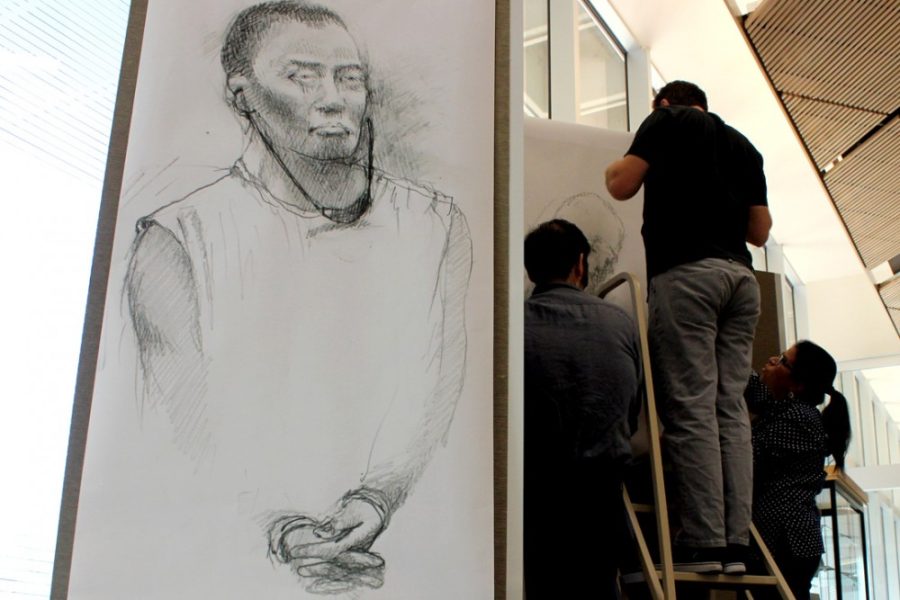When the Operation Streamline legislation bans any media access from capturing video of immigration court proceedings, the duty of documentation falls to an artist with a knack for putting pencil to paper.
Lawrence Gipe has been visiting courtrooms in Arizona for the last couple of years with the objective of hand-sketching defendants on trial for illegally crossing the border. Some of his sketches illustrate large groups of immigrants being tried simultaneously, part of the Operation Streamline program, a fast-track judicial process that convicts and deports dozens of migrants every day.
From the over 20 visits made to Streamline court proceedings, Gipe has drawn numerous sketches of men and women handcuffed and shackled as they approach the bench to meet their fate.
“There was clearly a need for this,” said Gipe, an associate professor in the School of Art, “and I think when there is a need, then an artist will respond.”
Gipe’s sketches are being donated to the UA Libraries’ Special Collections for a new exhibit titled “The Documented Border,” which opens publicly Friday. The sketches are joined by a variety of other materials all related to the U.S.-Mexico border.
Two professors from the School of Journalism are donating over 50 hours of audible interviews conducted with various journalists reporting on both sides of the border. These interviews will accompany 30 of Gipe’s sketches, as well as a number of photographs, books and documents from the Special Collections archive.
Celeste Gonzalez De Bustamante and Jeannine Relly began gathering these interviews back in 2011 as an academic research project. The over 60 journalists they’ve interviewed describe a diverse environment of organized crime and widespread violence existing along the border region.
“We wanted to provide the opportunity for journalists to tell their stories,” said Relly, an assistant professor for the School of Journalism. Relly and Bustamante plan to eventually co-write a book on all the journalists they’ve been interviewing for the last three years.
Relly added that a there is a common theme of resilience to be found in these journalists’ stories, with many of them reporting the news in the face of danger.
These materials’ timeliness is part of what makes this new exhibit different from those previously displayed in Special Collections.
“Part of our job is to anticipate what is going to be historically relevant,” said Veronica Reyes-Escudero, the interim director of Special Collections and curator of the exhibit. Reyes-Escudero said she hopes the exhibit will expand as more documents relevant to present immigration issues become recycled into the archive.
“We’re trying to show the difference before the big wall went up,” Reyes-Escudero said. She has many personal memories of living in the border town of Gadsden, Ariz., and said the bigger divide established along the border has made Gadsden less physically free from what she remembers in her youth.
One highlight of the exhibit are materials related to the Sanctuary Movement that took place in Arizona during the 1980s. When civil strikes erupted in Central America, a flood of refugees flocked to the U.S. border seeking salvation. A string of churches began housing the refugees in their journey to the U.S.
The exhibit includes court documents from trials attempting to prosecute the U.S. citizens who offered aid to these Central American refugees. Personal letters of James Corbett, one of the 11 people put on trial in 1986 for aiding in the Sanctuary Movement, dictate specific instructions to refugees on how to navigate across the border. These letters, along with Corbett’s personal journal, will be on display in the exhibit.
Portions of the materials will be accessible online starting Wednesday. The exhibit will host free keynote addresses by Luis Alberto Urrea, author of “The Devil’s Highway,”on Wednesday at 6:30 p.m., and by Martha Few, associate professor of Latin American history, on Nov. 5 at 6 p.m.
_______________
Follow Kevin C. Reagan on Twitter @KevinReaganUA









